The simultaneous production of phosphatidic acid and diacylglycerol is essential for the translocation of protein kinase Cepsilon to the plasma membrane in RBL-2H3 cells
- PMID: 12960426
- PMCID: PMC284792
- DOI: 10.1091/mbc.e03-05-0295
The simultaneous production of phosphatidic acid and diacylglycerol is essential for the translocation of protein kinase Cepsilon to the plasma membrane in RBL-2H3 cells
Abstract
To evaluate the role of the C2 domain in protein kinase Cepsilon (PKCepsilon) localization and activation after stimulation of the IgE receptor in RBL-2H3 cells, we used a series of mutants located in the phospholipid binding region of the enzyme. The results obtained suggest that the interaction of the C2 domain with the phospholipids in the plasma membrane is essential for anchoring the enzyme in this cellular compartment. Furthermore, the use of specific inhibitors of the different pathways that generate both diacylglycerol and phosphatidic acid has shown that the phosphatidic acid generated via phospholipase D (PLD)-dependent pathway, in addition to the diacylglycerol generated via phosphoinosite-phospholipase C (PLC), are involved in the localization of PKCepsilon in the plasma membrane. Direct stimulation of RBL-2H3 cells with very low concentrations of permeable phosphatidic acid and diacylglycerol exerted a synergistic effect on the plasma membrane localization of PKCepsilon. Moreover, the in vitro kinase assays showed that both phosphatidic acid and diacylglycerol are essential for enzyme activation. Together, these results demonstrate that phosphatidic acid is an important and essential activator of PKCepsilon through the C2 domain and locate this isoenzyme in a new scenario where it acts as a downstream target of PLD.
Figures

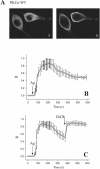
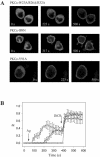
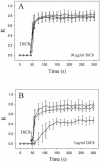
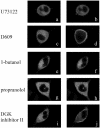

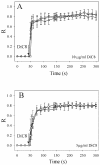
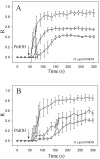
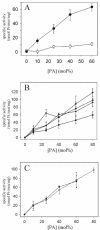

Similar articles
-
Structure of the C2 domain from novel protein kinase Cepsilon. A membrane binding model for Ca(2+)-independent C2 domains.J Mol Biol. 2001 Aug 24;311(4):837-49. doi: 10.1006/jmbi.2001.4910. J Mol Biol. 2001. PMID: 11518534
-
Stimulation of phosphatidate synthesis in endothelial cells in response to P2-receptor activation. Evidence for phospholipase C and phospholipase D involvement, phosphatidate and diacylglycerol interconversion and the role of protein kinase C.Biochem J. 1992 Oct 1;287 ( Pt 1)(Pt 1):31-6. doi: 10.1042/bj2870031. Biochem J. 1992. PMID: 1417783 Free PMC article.
-
Phosphatidylcholine-specific phospholipase D-derived 1,2-diacylglycerol does not initiate protein kinase C activation in the RBL 2H3 mast-cell line.Biochem J. 1992 Oct 1;287 ( Pt 1)(Pt 1):325-31. doi: 10.1042/bj2870325. Biochem J. 1992. PMID: 1384468 Free PMC article.
-
Phospholipid signalling through phospholipase D and phosphatidic acid.IUBMB Life. 2006 Aug;58(8):457-61. doi: 10.1080/15216540600871142. IUBMB Life. 2006. PMID: 16916782 Review.
-
Plant phospholipases D and C and their diverse functions in stress responses.Prog Lipid Res. 2016 Apr;62:55-74. doi: 10.1016/j.plipres.2016.01.002. Epub 2016 Jan 16. Prog Lipid Res. 2016. PMID: 26783886 Review.
Cited by
-
Phospholipase D2 is involved in the formation of Golgi tubules and ArfGAP1 recruitment.PLoS One. 2014 Oct 29;9(10):e111685. doi: 10.1371/journal.pone.0111685. eCollection 2014. PLoS One. 2014. PMID: 25354038 Free PMC article.
-
Physiological role for phosphatidic acid in the translocation of the novel protein kinase C Apl II in Aplysia neurons.Mol Cell Biol. 2008 Aug;28(15):4719-33. doi: 10.1128/MCB.00178-08. Epub 2008 May 27. Mol Cell Biol. 2008. PMID: 18505819 Free PMC article.
-
The tumor promoter-activated protein kinase Cs are a system for regulating filopodia.Cytoskeleton (Hoboken). 2017 Aug;74(8):297-314. doi: 10.1002/cm.21373. Epub 2017 May 24. Cytoskeleton (Hoboken). 2017. PMID: 28481056 Free PMC article.
-
Targeting of protein kinase C-epsilon during Fcgamma receptor-dependent phagocytosis requires the epsilonC1B domain and phospholipase C-gamma1.Mol Biol Cell. 2006 Feb;17(2):799-813. doi: 10.1091/mbc.e04-12-1100. Epub 2005 Nov 30. Mol Biol Cell. 2006. PMID: 16319178 Free PMC article.
-
Hair Metabolomic Profiling of Diseased Forest Musk Deer (Moschus berezovskii) Using Ultra-High-Performance Liquid Chromatography-Tandem Mass Spectrometry (UHPLC-MS/MS).Animals (Basel). 2025 Jul 21;15(14):2155. doi: 10.3390/ani15142155. Animals (Basel). 2025. PMID: 40723618 Free PMC article.
References
-
- Akita, Y., et al. (1994). Overproduction of a Ca2+-independent protein kinase C isozyme, nPKC epsilon, increases the secretion of prolactin from thyrotropin-releasing hormone-stimulated rat pituitary GH4C1 cells. J. Biol. Chem. 269, 4653–4660. - PubMed
-
- Andresen, B.T., Rizzo, M.A., Shome, K., and Romero, G. (2002). The role of phosphatidic acid in the regulaton of the Ras/MEK/ERK signalling cascade. FEBS Lett. 531, 65–68. - PubMed
-
- Besson, A., Wilson, T.L., and Yong, V.W. (2002). The anchoring protein RACK1 links protein kinase C epsilon to integrin beta chains. J. Biol. Chem. 277, 22073–22084. - PubMed
-
- Bleasdale, J.E., Thakur, N.R., Gremban, R.S., Bundy, G.L., Fitzpatrick, F.A., Smith, R.J., and Bunting, S. (1990). Selective inhibition of receptor-coupled phospholipase C-dependent processes in human platelets and polymorphonuclear neutrophils. J. Pharmacol. Exp. Ther. 255, 756–768. - PubMed
Publication types
MeSH terms
Substances
LinkOut - more resources
Full Text Sources
Miscellaneous

